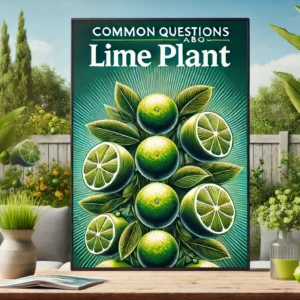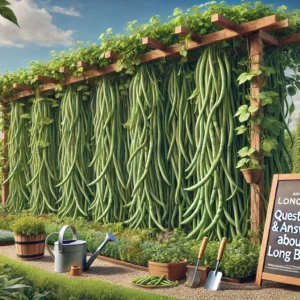Soursop (Annona muricata), also known as graviola, is a tropical fruit-bearing tree prized for its large, spiny fruits with sweet, creamy flesh. The fruit is commonly used in beverages, desserts, and traditional medicines. Growing soursop in a pot is a great way to enjoy this tropical delight even in non-tropical climates. With the right care and conditions, potted soursop can thrive and bear fruit.
Ideal Pot Size
For growing soursop in a pot, choose a container that is at least 20-25 gallons (75-95 liters) in size. The pot should be at least 18-24 inches (45-60 cm) in diameter and depth to accommodate the tree’s root system as it grows.
Ideal Weather Conditions for Soursop
| Climate Factor | Ideal Condition |
|---|---|
| Temperature | 25-30°C (77-86°F) |
| Humidity | High humidity (60-80%) |
| Rainfall | 1,000-1,200 mm annually |
| Sunlight | Full sun with some partial shade |
| Wind | Sheltered from strong winds |
Choosing the Right Seed
From the Shop:
- Source: Purchase seeds from a reputable supplier to ensure high germination rates.
- Appearance: Seeds should be plump, dark brown to black, and free of cracks or mold.
Collecting and Preserving:
- Harvesting: Extract seeds from a fully ripe, healthy soursop fruit. Clean the seeds by rinsing them in water to remove any pulp.
- Drying: Allow the seeds to air-dry on a paper towel for 1-2 days.
- Storage: Store the dried seeds in an airtight container in a cool, dark place. Seeds can be stored for up to six months.
Growing Seedlings from Seeds
- Soak Seeds: Soak the seeds in warm water for 24 hours to soften the seed coat and enhance germination.
- Prepare Seed Trays: Fill seed trays or small pots with a well-draining seed starting mix.
- Plant Seeds: Sow the seeds about 1 inch deep in the soil.
- Watering: Water the seeds lightly to keep the soil moist but not waterlogged.
- Germination: Place the trays in a warm, humid environment. Seeds typically germinate within 3-4 weeks.
- Light: Ensure seedlings receive plenty of indirect sunlight or fluorescent light.
- Thinning: Once seedlings develop their first set of true leaves, thin them out to avoid overcrowding.
Nutrition Requirements for Soursop
| Nutrient | Importance | Frequency |
|---|---|---|
| Nitrogen (N) | Promotes leafy growth | Every 4-6 weeks |
| Phosphorus (P) | Enhances root development and flowering | Every 6-8 weeks |
| Potassium (K) | Improves fruit quality and disease resistance | Every 4-6 weeks |
| Magnesium (Mg) | Essential for chlorophyll production | Every 8-12 weeks |
| Calcium (Ca) | Strengthens cell walls and root health | Every 8-12 weeks |
Soil Mix for Soursop
| Ingredient | Amount | Alternative |
|---|---|---|
| Potting Soil | 50% | Garden soil |
| Perlite | 20% | Sand |
| Compost | 20% | Well-rotted manure |
| Coconut Coir | 10% | Peat moss |
Making the Ideal Soil Mix
- Combine Ingredients: Mix potting soil, perlite, compost, and coconut coir in the given ratios.
- Blend Thoroughly: Ensure the mixture is well-blended to maintain consistent texture and nutrient distribution.
- Adjust pH: The ideal soil pH for soursop is between 5.5 and 6.5. Adjust the pH if necessary using lime (to raise pH) or sulfur (to lower pH).
Special Instructions for Pot Drainage
- Drainage Holes: Ensure the pot has several drainage holes to prevent waterlogging.
- Layering: Add a layer of gravel or broken pottery at the bottom of the pot to enhance drainage.
Transferring Seedlings to the Pot
- Harden Off: Gradually acclimate the seedlings to outdoor conditions by exposing them to sunlight for increasing periods over 7-10 days.
- Prepare the Pot: Fill the pot with the prepared soil mix, leaving enough space for the root ball.
- Transplant: Gently remove seedlings from the trays, taking care not to damage the roots. Place them in the pot and fill with soil.
- Watering: Water thoroughly after planting to settle the soil around the roots.
Care During Growth Stages
Seedling Stage
- Watering: Keep soil consistently moist but not waterlogged.
- Fertilizing: Use a balanced, diluted fertilizer every 4-6 weeks.
- Pruning: Remove any weak or diseased leaves.
Vegetative Stage
- Watering: Increase watering frequency as the plant grows, ensuring the soil remains moist but not soggy.
- Fertilizing: Apply a balanced fertilizer high in nitrogen every 4 weeks.
- Pruning: Prune to shape the tree and remove any crossing branches.
Flowering Stage
- Watering: Maintain consistent moisture, avoid water stress.
- Fertilizing: Use a fertilizer higher in phosphorus to encourage flowering.
- Pruning: Remove any dead or damaged branches.
Fruiting Stage
- Watering: Ensure deep watering to support fruit development.
- Fertilizing: Use a potassium-rich fertilizer to enhance fruit quality.
- Pruning: Thin out excess fruit to prevent branch breakage and improve fruit size.
Special Instructions for Growing in a Pot
- Mobility: Keep the pot in a location where it can receive full sunlight. Consider using a plant caddy with wheels for easy movement.
- Temperature Control: In cooler climates, bring the pot indoors or to a greenhouse during cold weather.
- Pest Management: Regularly check for pests and treat with organic insecticides if necessary.
Harvesting and Preserving
- Harvesting: Soursop fruits are ready to harvest when they are slightly soft to the touch and emit a fragrant aroma, typically 4-5 months after flowering.
- Picking: Use a sharp knife or pruning shears to cut the fruit from the tree, leaving a short stem attached.
- Storage: Soursop can be stored in the refrigerator for up to 5 days. For longer preservation, the pulp can be frozen or processed into juice or puree.
- Processing: To freeze, scoop out the flesh, remove seeds, and store in airtight containers. For juice, blend the flesh and strain out the solids.
By following these guidelines, you can successfully grow, care for, and harvest soursop plants in a pot, enjoying the unique and nutritious fruits they produce.



